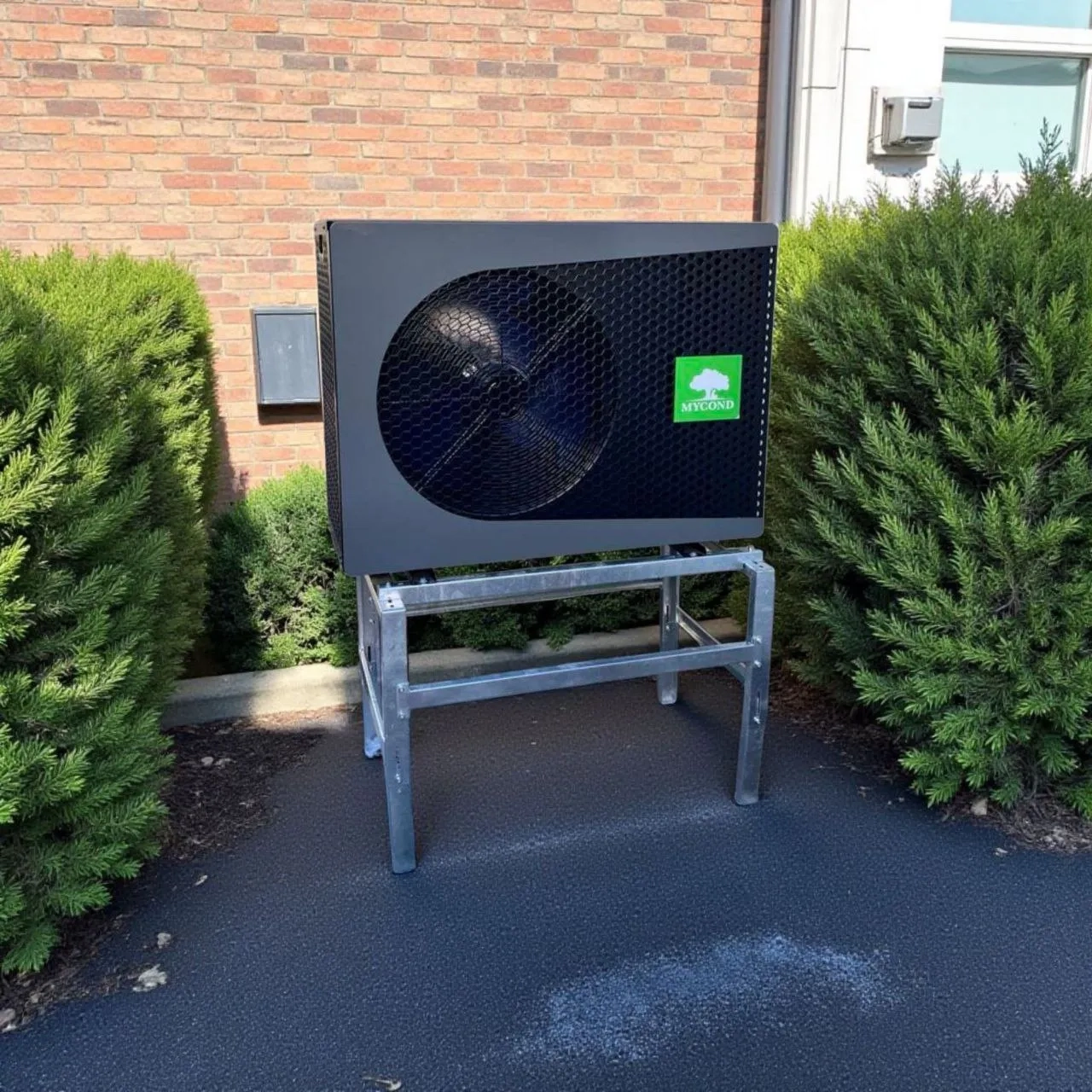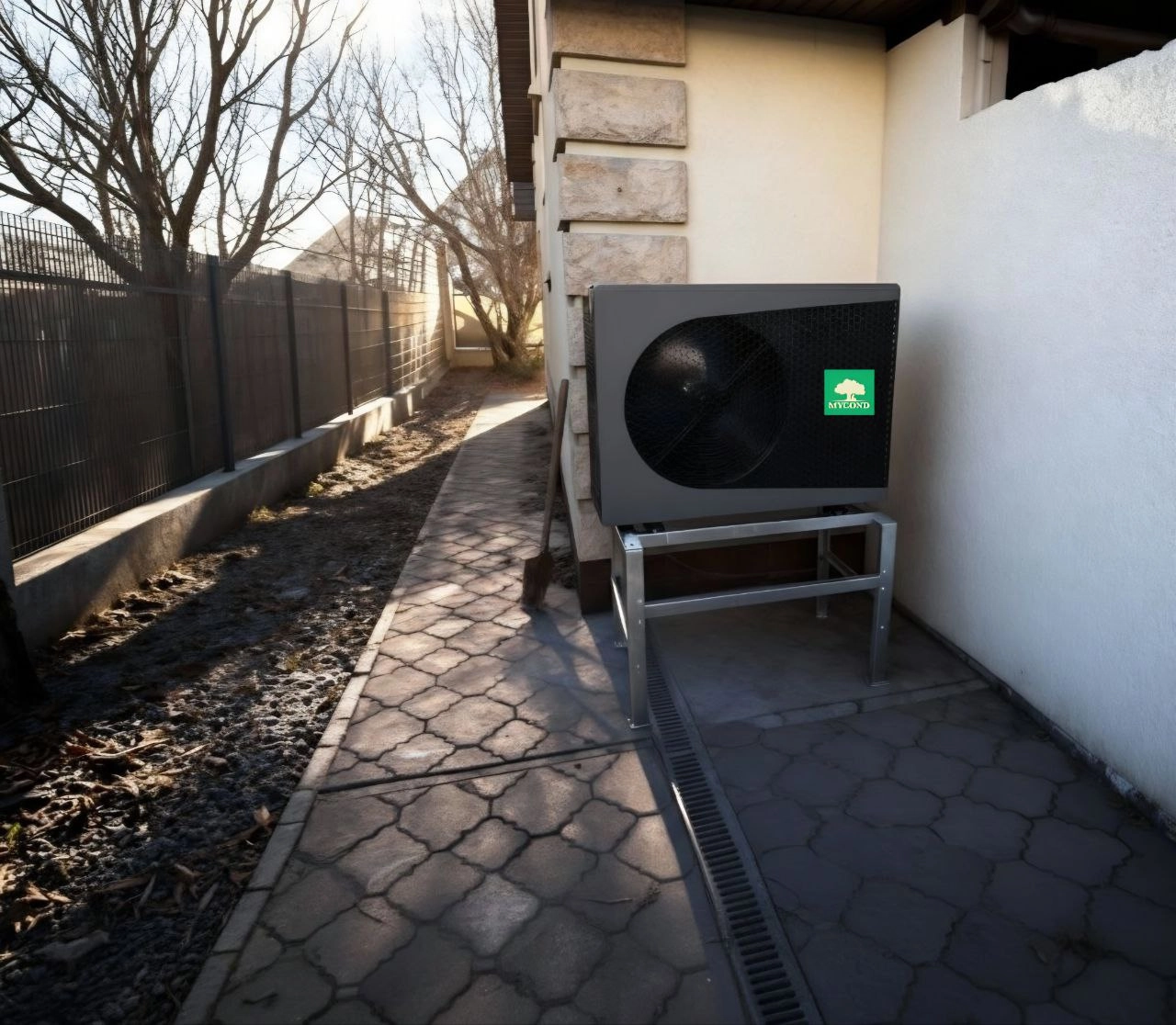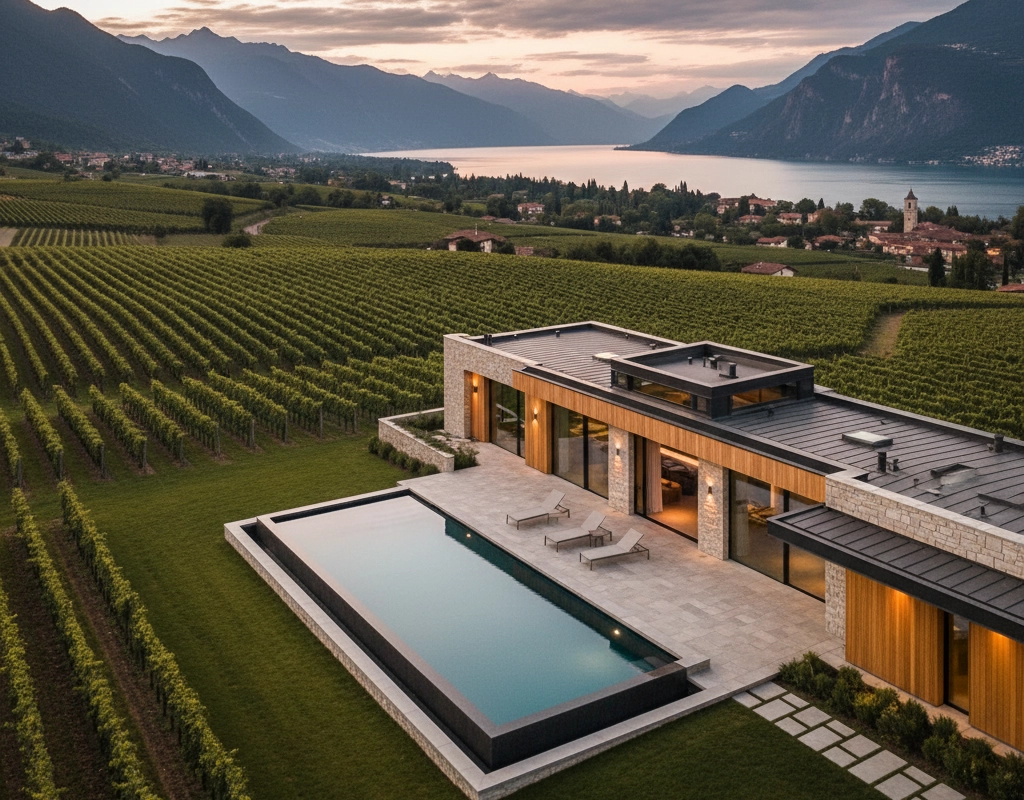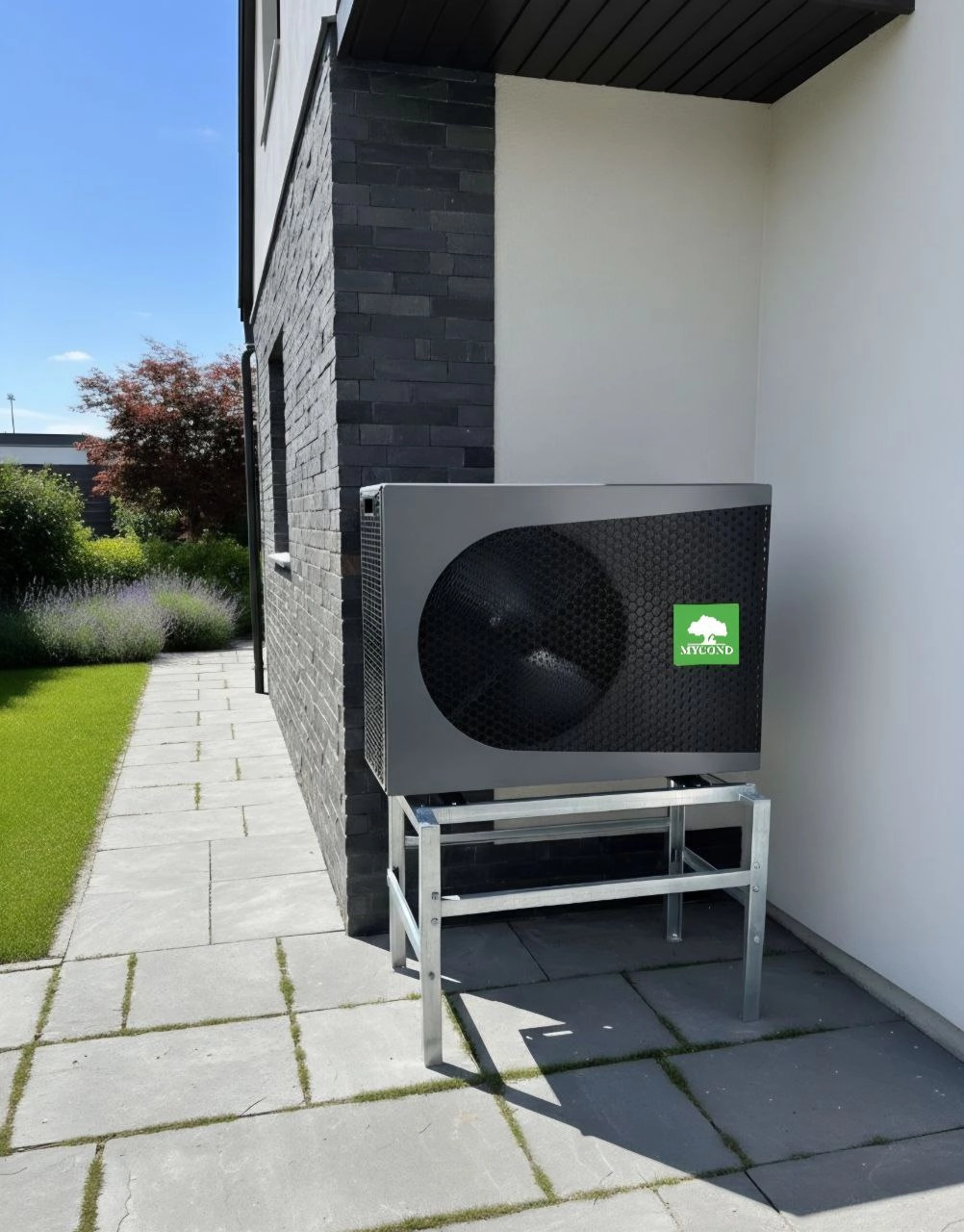
A homeowner who decides to install a heat pump often faces a difficult choice. Which type of heat pump is the most efficient for a particular house? Which brand is the most reliable among dozens on the market? What capacity should you choose for your space? What supply temperature can the heat pump provide (especially important for homes with older radiators)? Why has the monobloc become the most common type of heat pump? These are just some of the questions a homeowner faces.
There are dozens of brands and types of heat pumps on the market, but when choosing you should focus on specific criteria: SCOP (seasonal coefficient of performance), component reliability (especially the compressor), operating temperature range (especially for regions with harsh winters), and ease of system installation.
Choosing the optimal heat pump can be challenging, but understanding the key parameters and features of different types will help you make the right decision. In this article, we will review the selection criteria and focus on monobloc heat pumps as the most popular and practical solution for most cases.

Types of heat pumps and their efficiency
Today there are three main types of heat pumps, each with its own advantages and application specifics:
Air-to-water
This is the most common type of heat pump, accounting for over 70% of the EU market. Its popularity is due to the optimal balance between price and efficiency, as well as ease of installation, since it does not require ground works. Air-to-water heat pumps are divided into two subtypes:
- Split system: consists of outdoor and indoor units connected by refrigerant lines.
- Monobloc: all components are housed in a single unit; connection is made only through water pipes.
Ground-to-water (geothermal)
This type of heat pump provides a higher SCOP (5–6), but requires significant capital expenditures — installation is 3–4 times more expensive compared to air-to-water due to the need for drilling boreholes or installing ground collectors.
Water-to-water
Requires access to a water source (well, lake) and is rarely used due to specific site requirements.
Why is a monobloc more efficient than a split system?
A monobloc heat pump has a number of advantages that make it the most common solution:
- The absence of refrigerant lines simplifies installation (no certified refrigeration specialist is required) and reduces the risk of refrigerant leakage.
- All components are protected in a single housing, which ensures higher reliability in operation.
- Hydraulic connection through Ø25–32 mm pipes allows for a quick system start-up.
SCOP and EVI technology: key efficiency factors
SCOP (Seasonal Coefficient of Performance) shows how many kilowatts of heat a heat pump delivers per 1 kW of electricity consumed during the heating season. A SCOP of 4.5 means that for 1 kW of electricity the system produces 4.5 kW of heat, providing 55–60% savings compared to an electric boiler. Energy efficiency class A+++ corresponds to SCOP 4.5 and above.
EVI (Enhanced Vapor Injection) technology increases compressor performance at low temperatures (-15/-25°C), when conventional heat pumps lose capacity. The leaders in manufacturing EVI compressors are Panasonic and Copeland.
Checklist for choosing a heat pump
When choosing the most reliable and efficient heat pump, pay attention to the following parameters:
A. Efficiency
- SCOP (seasonal coefficient): for the European climate, the recommended minimum is 4.0. Class A+++ corresponds to SCOP 4.5+. For underfloor heating systems (W35) the SCOP will be higher; for radiator heating (W55) 3.2–3.5 is sufficient.
- COP at different outdoor temperatures: check the figures at -7°C and -15°C, as these are operating points for most days of the heating season in Europe. If the COP at -15°C is below 2.5, the heat pump will be inefficient in winter.

B. Reliability
- Compressor: give preference to models with Panasonic, Copeland or Hitachi compressors with EVI technology. Such compressors usually have a 5–7 year warranty and have been verified by tests at extreme temperatures.
- Heat Pump Keymark certification: an EU international standard (EN 14825:2022) that includes independent tests of SCOP, noise, and reliability. The absence of a certificate may indicate that the declared characteristics do not match real-world performance.
- Protective functions: freeze protection, overheat protection, high/low refrigerant pressure monitoring, automatic restart after a power outage.
C. Capacity
- Capacity calculation: approximately 1 kW per 10 m² of an insulated house. For example, for a 150 m² house, a heat pump with approximately 15 kW capacity is needed. When calculating, consider heat losses (through walls, windows, roof) and the minimum winter temperature in your region.
- Operating range: check down to which negative temperature the heat pump operates stably. For Central Europe, operation down to -20/-25°C is critical.
D. Supply temperature
- W35 (35°C): optimal for underfloor heating systems and fan coils, provides higher SCOP.
- W55 (55–60°C): suitable for retrofitting older radiator systems, allowing you to keep the existing heating system.
E. Refrigerant
- R32: a more environmentally friendly option (GWP 675 compared to R410A 2088), 10% more efficient. This is the modern standard for heat pumps.
- R290 (propane): a promising refrigerant (GWP 3), but still less common on the market.
F. Additional parameters
- Sound level dB(A): 48–55 dB(A) at a distance of 1 m is considered acceptable. It is important to have a quiet mode for night time, especially in residential areas.
- Control: Wi‑Fi connectivity, Modbus for integration into smart home systems, weather-compensated control.
- Warranty: at least 3 years on the equipment, 5–7 years on the compressor.
Mycond BeeThermic models — the optimal choice for efficient heating
The BeeThermic series from Mycond meets all the key criteria for choosing the most efficient and reliable heat pump: monobloc design, Panasonic EVI compressor, SCOP 4.47–4.58 (A+++ class), Heat Pump Keymark certification and proven operation down to -25°C.
Comparative table of Mycond BeeThermic models
| Model | Heating capacity (kW) | Cooling capacity (kW) | SCOP W35/W55 | Energy efficiency class | Noise dB(A) at 1 m | House area (m²) | Operation down to (°C) |
|---|---|---|---|---|---|---|---|
| MHCM 06 SU1A | 6.5 | 5.0 | 4.58/3.23 | A+++/A++ | 49/48 | up to 65 | -25 |
| MHCM 10 SU1A | 10.6 | 8.5 | 4.47/3.24 | A+++/A++ | 52/50 | up to 105 | -25 |
| MHCM 14 SU3A | 14.8 | 12.0 | — | A+++/A++ | 54 | up to 150 | -25 |
| MHCM 18 SU3A | 18.8 | 20.4 | 4.53/3.28 | A+++/A++ | 55 | up to 190 | -25 |
BeeThermic advantages
- Reliability:
- Panasonic compressor with EVI technology: tested at -24.87°C with outlet water at +49.99°C with stable operation for over an hour without errors (documented in the technical manual).
- Heat Pump Keymark 2024 certification (according to EN 14825:2022, EN 14511-4:2022) — independent confirmation of the declared characteristics.
- Automatic recovery of operation after power and water supply failures without the need for manual intervention.
- Comprehensive protection against freezing and overheating, refrigerant pressure monitoring, overcurrent protection, and a self-diagnostic system.
- Efficiency:
- SCOP 4.47–4.58 for W35 (A+++ class): for 1 kW of electricity the system delivers up to 4.5 kW of heat, providing 55–60% savings compared to an electric boiler and 40–50% compared to a gas boiler.
- SCOP 3.23–3.28 for W55 (A++ class) — a sufficient figure for retrofitting systems with older radiators.
- Use of R32 refrigerant, which is 10% more efficient than R410A and has a lower environmental impact (GWP 675).
- Minimal consumption in standby mode: 0.008–0.015 kW.

When to choose Mycond BeeThermic
Mycond BeeThermic heat pumps are the optimal choice in the following cases:
- You are looking for the most reliable heat pump: Panasonic EVI compressor + Heat Pump Keymark certification + validated tests at -25°C guarantee stable operation in the harshest conditions.
- You need the most efficient heat pump: SCOP 4.47–4.58 (A+++ class) provides up to 60% savings compared to an electric boiler.
- You value simple installation: the monobloc design eliminates the need for refrigerant piping and allows the system to be installed within one day.
- You are retrofitting an existing heating system: the ability to operate in W55 with a supply temperature up to 55–60°C allows you to keep old radiators.
- Your region has a cold climate with frosts down to -20/-25°C: proven operation at -24.87°C with outlet water at +49.99°C.
- You need cooling in summer: cooling mode with output up to 20.4 kW (MHCM 18 model).
- You require domestic hot water: the systems provide DHW with an anti-legionella mode for safe use.
- Remote control matters to you: support for the Mycond app via Wi‑Fi and Modbus for integration into smart home systems.
Consider alternatives in the following cases:
- For very large properties with an area over 250 m², cascading two or more BeeThermic heat pumps may be appropriate.
- In regions with regular temperatures below -30°C, a combined system is recommended: heat pump + auxiliary heat source (electric or gas heater).
- With a very limited budget, you can consider basic models without EVI technology, but be aware of their lower efficiency at low temperatures.
Installation, operation and service
The installation and operation of Mycond BeeThermic heat pumps is characterized by simplicity and reliability:
Installation
- The monobloc is installed outside the house on a foundation or brackets, maintaining a minimum distance of 30 cm from the wall to ensure proper ventilation.
- Hydraulic connection is via 25–32 mm pipes (supply/return) with connection to the heating system and/or a domestic hot water tank.
- Electrical connection: most models require a 380 V, 3‑phase network, with an appropriate protective circuit breaker and grounding.
- Commissioning includes setting the weather-compensated curve, operating schedule, and quiet mode for night time (22:00–6:00).
- An experienced team of specialists can complete installation within one working day.
Operation
- Minimal consumption in standby mode: 0.008–0.015 kW, which equals only €2–3 per year.
- The automatic protection system activates the heat pump at a water temperature below 5°C, protects against overheating, and monitors refrigerant pressure.
- Via the Mycond app you can remotely control the temperature, monitor consumption, and receive error codes.
Service
- An annual preventive inspection is recommended, including checking and cleaning filters and heat exchangers, monitoring refrigerant pressure, and checking electrical connections.
- The self-diagnostic system displays error codes on the display (E01, E02, etc.), with detailed descriptions provided in the technical manual.
Frequently asked questions about heat pumps
Which type of heat pump is the most efficient?
An air-to-water heat pump, such as BeeThermic, provides an optimal balance between price and efficiency. SCOP 4.5+ means that for 1 kW of electricity the system delivers 4.5 kW of heat, providing 55–60% savings compared to an electric boiler. Although geothermal systems (ground-to-water) can reach SCOP 5–6, their installation is 3–4 times more expensive due to the need to drill boreholes or install collectors 50–100 m long. Monoblocs are more efficient than split systems due to the absence of heat losses in refrigerant lines and simpler installation.
Which heat pump brand is the most reliable?
When choosing a reliable heat pump, pay attention to the compressor manufacturer (Panasonic, Copeland or Hitachi with EVI technology) and the presence of Heat Pump Keymark certification. BeeThermic uses a Panasonic EVI compressor, tested at -24.87°C with outlet water at +49.99°C with stable operation for over an hour without errors, which is documented. Heat Pump Keymark certification according to EN 14825:2022 ensures that the declared SCOP, noise and reliability characteristics match real-world performance.
What capacity heat pump is needed to heat a house?
Approximately 1 kW of heating capacity is needed per 10 m² of insulated house. For example, for a 150 m² house, the optimal choice would be the MHCM 14 SU3A model with 14.8 kW capacity. For an accurate calculation, consider heat losses through walls, windows, and roof (U-value W/m²·K), the minimum winter temperature in your region, and the desired indoor temperature. For old or uninsulated houses, a 20–30% capacity margin is recommended.
What supply temperature can a heat pump deliver?
The temperature delivered by a heat pump depends on the operating mode. For systems with underfloor heating or fan coils (W35 mode) the supply temperature is 35°C, providing SCOP 4.5–5.0. For radiator systems (W55 mode) it reaches 55–60°C with SCOP 3.2–3.5, allowing you to retrofit the existing system without replacing radiators. BeeThermic operates in both modes, allowing you to combine different heating systems: for example, radiators on the ground floor and underfloor heating on the second floor.
Why is the monobloc the most common type of heat pump?
According to the EHPA (European Heat Pump Association) for 2023–2024, monoblocs account for over 70% of the EU market. Their popularity is due to several factors: simple installation without refrigerant lines (water pipes with a diameter of 25–32 mm are sufficient), lower risk of refrigerant leakage thanks to all components being housed in a single unit, faster and cheaper installation (usually within one day), and higher reliability thanks to protected components in the outdoor unit.
Get maximum efficiency with Mycond BeeThermic
Looking for the most reliable and efficient monobloc heat pump? Mycond BeeThermic is a proven solution with a Panasonic EVI compressor (validated tests at -25°C), Heat Pump Keymark certification and SCOP 4.47–4.58 (A+++ class). By installing this system, you will get up to 60% savings compared to an electric boiler, simple installation within one day, and three in one: heating, cooling and domestic hot water.
Download the BeeThermic technical documentation to get acquainted with the full SCOP specifications, installation diagrams and certificates. Use our online calculator to determine the optimal heat pump capacity for your home taking into account heat losses.
Contact the official Mycond dealer in your region for an engineer consultation and turnkey professional installation. If you have questions about model selection or installation specifics, write to us in the chat — our engineers will help you choose the optimal configuration for your home.